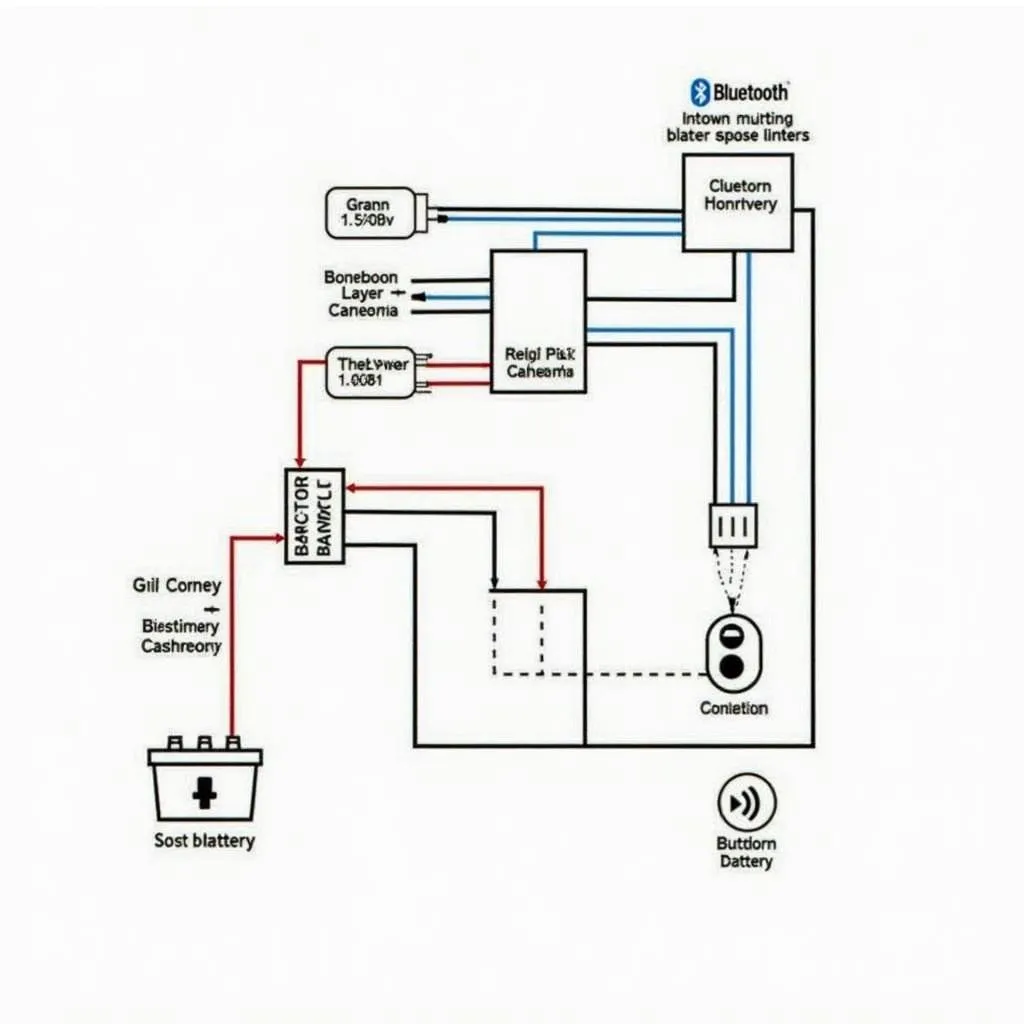The brake pads warning light on your Audi A3 8V is a crucial safety feature designed to alert you when your brake pads are nearing the end of their lifespan. Ignoring this warning light can lead to reduced braking performance and potentially dangerous driving situations. This comprehensive guide will delve into the common causes of this warning light, provide step-by-step instructions on how to diagnose the issue, and offer practical solutions to get you back on the road safely.
Understanding Your Audi A3 8V Brake Pad Warning System
Your Audi A3 8V is equipped with an advanced electronic brake pad wear sensor system. This system constantly monitors the thickness of your brake pads and triggers the warning light on your dashboard when they reach a critical wear level.
The warning light is usually a yellow or red circle with an exclamation mark and the word “BRAKE.” In some cases, a message like “Brake Pads Worn” might also appear on your driver information display.
Common Causes of the Brake Pad Warning Light
While worn brake pads are the most common culprit, several other factors can trigger the brake pad warning light on your Audi A3 8V:
- Worn Brake Pad Sensors: The brake pad wear sensors themselves can wear out or get damaged over time, leading to a false warning light.
- Damaged Brake Pad Wiring: The wiring harness connecting the brake pad sensors to the car’s electrical system can become frayed or severed, disrupting the signal and causing the warning light to illuminate.
- Faulty Brake Fluid Level Sensor: A low brake fluid level can also trigger the brake pad warning light. This is because low brake fluid can indicate a leak in your brake system, which could affect your braking performance.
- Malfunctioning Instrument Cluster: In rare cases, a faulty instrument cluster might incorrectly display the brake pad warning light even if there’s no issue with your brakes.
Diagnosing the Brake Pad Warning Light
Before assuming the worst, it’s crucial to diagnose the root cause of the warning light. Here’s a step-by-step guide:
-
Check Your Brake Pads Visually: Safely jack up your Audi A3 8V and secure it on jack stands. Remove the wheels and inspect your brake pads. Look for signs of significant wear, such as the friction material being less than 3mm thick.
-
Inspect the Brake Pad Wear Sensors: Each brake pad on your Audi A3 8V usually has a small wear sensor, typically a thin wire loop embedded within the brake pad material. Carefully inspect these sensors for any signs of damage, such as breaks or fraying.
-
Check the Brake Fluid Level: Locate the brake fluid reservoir under the hood of your car. The reservoir is usually translucent with a “MIN” and “MAX” marking. Ensure the brake fluid level is between these markings.
-
Scan for Trouble Codes: If a visual inspection doesn’t reveal the issue, it’s advisable to scan your Audi A3 8V for Diagnostic Trouble Codes (DTCs) using an OBD-II scanner. This can help pinpoint the specific area of the brake system that’s triggering the warning light.
“Remember, safety is paramount when working on your vehicle. If you’re unsure about any step of the diagnostic process, it’s always best to consult a qualified Audi technician.” – John Miller, Certified Audi Master Technician
Resolving the Brake Pad Warning Light Issue
Once you’ve identified the root cause of the warning light, you can take the necessary steps to resolve the issue:
-
Brake Pad Replacement: If your inspection reveals worn brake pads, it’s crucial to replace them immediately. It’s recommended to replace both pads on the same axle, even if only one appears significantly worn.
-
Brake Pad Sensor Replacement: If you discover a damaged or worn brake pad sensor, it needs to be replaced. Brake pad sensors are relatively inexpensive and can be purchased at most auto parts stores.
-
Repair or Replace Damaged Wiring: Any damaged or frayed wiring in the brake pad sensor system should be repaired or replaced by a qualified technician.
-
Address Brake Fluid Leak: If you find a low brake fluid level, it’s essential to identify and address the source of the leak. This typically involves inspecting the brake lines, calipers, and wheel cylinders for any signs of leakage.
-
Consult a Qualified Technician: If you’re unable to diagnose or resolve the issue yourself, it’s crucial to seek assistance from a qualified Audi technician. They have the expertise, tools, and diagnostic equipment to pinpoint and fix the problem effectively.
Conclusion
The brake pad warning light on your Audi A3 8V is a crucial safety feature that should never be ignored. By understanding the potential causes and following the diagnostic steps outlined in this guide, you can address the issue promptly and ensure your vehicle remains safe to drive. Remember, regular maintenance and timely attention to warning lights are key to a safe and enjoyable driving experience.

